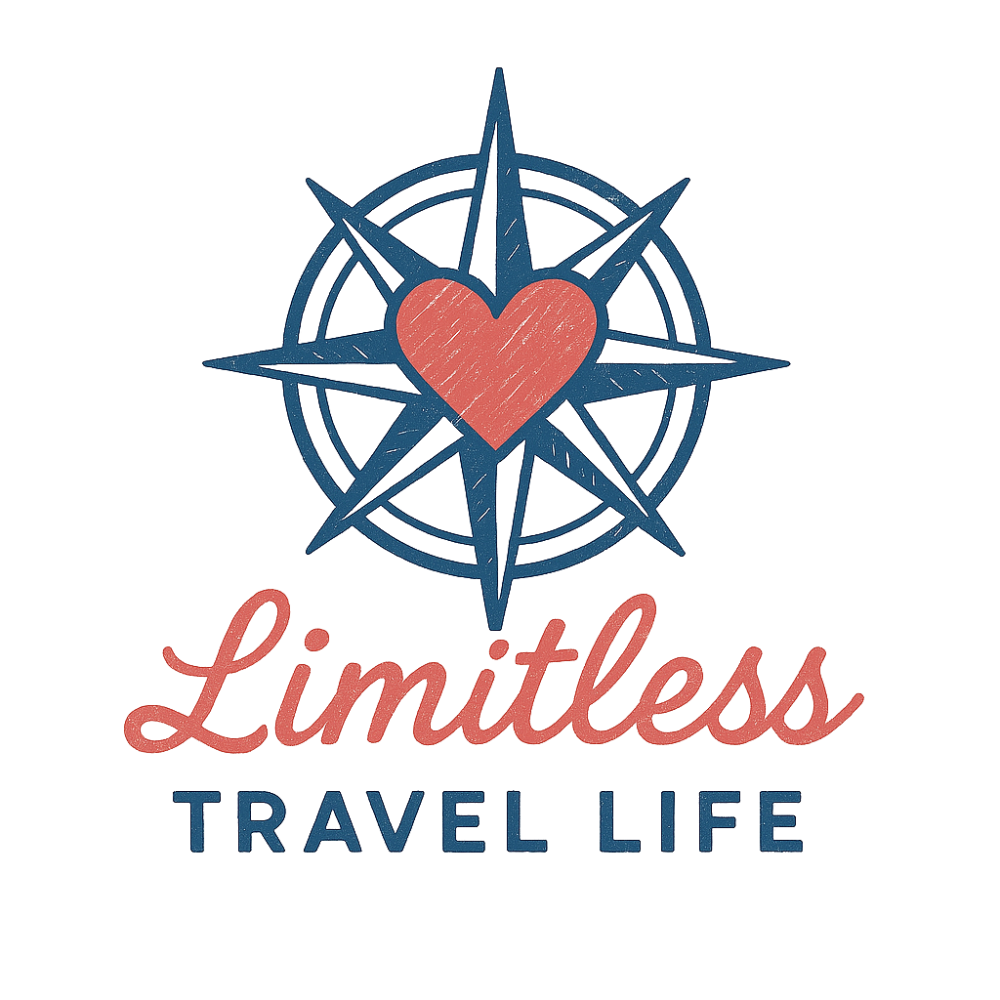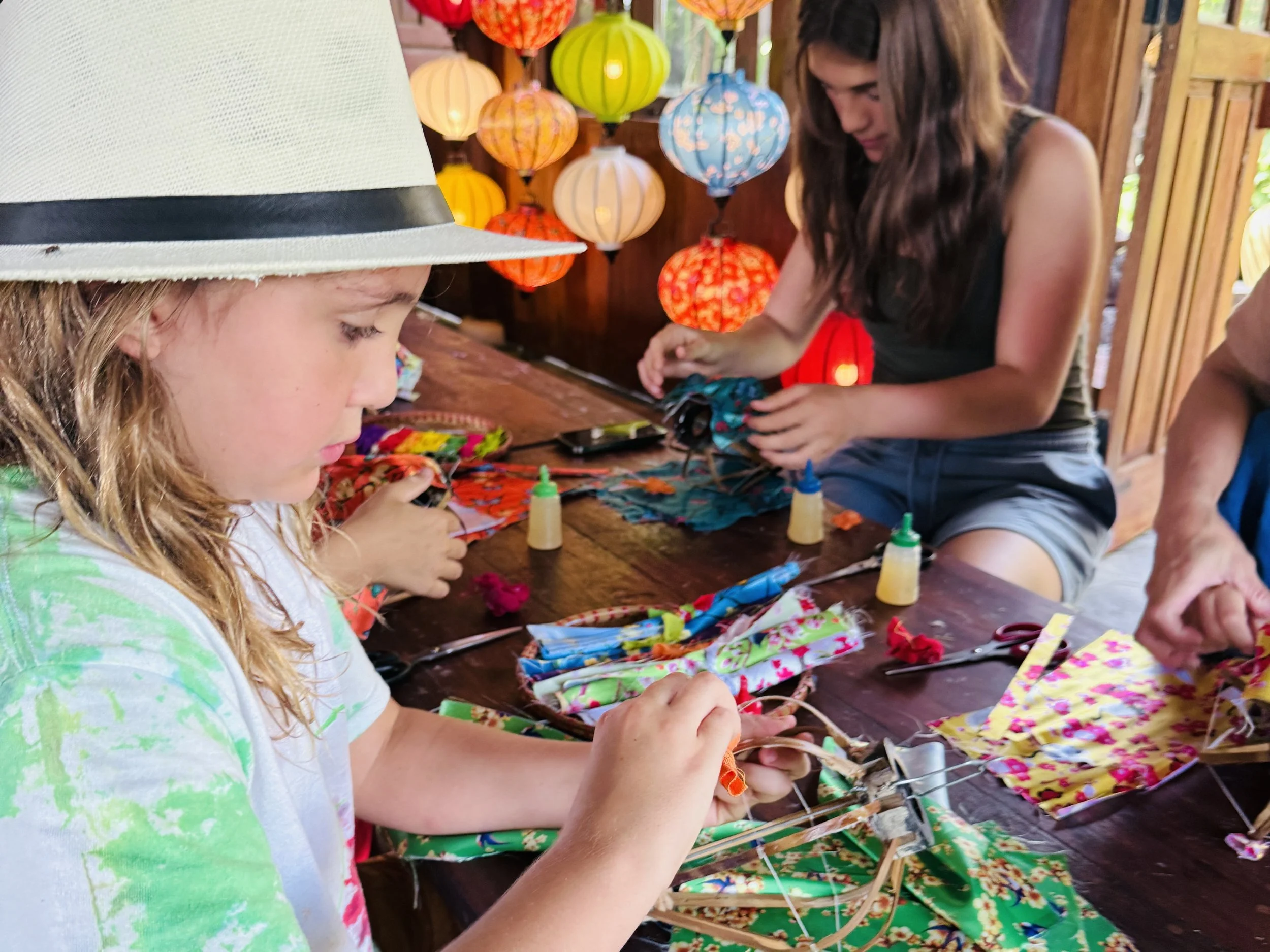Why We Prioritize Experiences Over Destinations (And How You Can Too)
Let’s be honest...
Most travelers plan their trips around a place:
“We’re going to Paris!”
“Let’s see Machu Picchu!”
“Tokyo is on our bucket list!”
But after years of full-time travel as a family, we’ve learned that the true magic doesn’t come from checking off destinations.
It comes from what you do when you’re there.
From making fresh spring rolls in Cambodia to sandboarding in the Peruvian desert, our most memorable moments come from experiences that connect us to people, culture, and nature, not from landmarks.
Here’s why we’ve shifted from chasing places to seeking experiences and how that simple mindset change has transformed our travels.
Dune surfing in Huacachina, Peru
1. It Started With One Unexpected Moment
When we first started traveling full-time, I had a checklist packed with famous sites we had to see. We rushed through museums, monuments, and “top 10” attractions, trying to squeeze in as much as possible.
Then the pandemic hit, and we found ourselves stuck in Nepal. During that unexpected pause, something shifted. We had the chance to interview a local artist for our YouTube channel (AMAR SHAKYA, PAUBHA ARTIST in Nepal. People we meet), and in the process, he offered to teach our kids his artistic techniques. A few days later, we also interviewed our hosts, who gave us a place to stay for a reasonable price the night before Nepal went into lockdown (COSY NEPAL in PATAN, Nepal. People we meet), and that’s when everything changed.
That’s where we found a real connection.
That’s where we discovered the true inspiration behind our travels.
It wasn’t about checking off landmarks anymore.
It was about slowing down and connecting, on a deeper, more meaningful level, with the people and culture around us.
That was our turning point. We realized the moments we remember most aren’t the biggest or most famous, they’re the ones where we engage, share, and genuinely feel where we are.
2. Cambodia: From Street Food to Circus Magic
Let me give you a more recent example. When we visited Cambodia a few months ago, we naturally marveled at Angkor Wat and spent time exploring the temples.
But what we really remember is making Khmer curry together during a local cooking class in Siem Reap. After picking up our ingredients at the local market, we were welcomed into a small open-air kitchen. Our teacher showed us how to grind spices by hand, cook over an open fire, and finish our dishes with delicate banana leaf flowers.
The kids were so proud of what they made, especially Luca, who almost burned himself while enthusiastically stirring the meat in the pan. Despite the near mishap, we all finished every bite with big smiles.
That evening, we attended the Phare Circus, an incredible performance blending storytelling, acrobatics, and music. What made it truly unforgettable was learning that the performers were all young people from disadvantaged backgrounds, trained through a social arts school. The show wasn’t just entertaining, it was profoundly moving. I found a ticket option on Viator that allowed us to go behind the scenes, and it gave all of us a much greater appreciation for the effort, passion, and dedication these artists pour into their craft. It left a lasting impression on every one of us.
A beautiful moment also occurred backstage. As we watched the artists prepare, Mass noticed a therapist massaging one of the performers who seemed to be in pain. With his background in physical therapy, he offered to help. The therapist welcomed his support, and within minutes, the artist began to feel better. Soon, more performers began lining up for a quick check-up from Mass. It turned into a spontaneous collaboration, and what struck us most was how open and grateful everyone was. The therapist didn’t feel threatened; she just felt relieved to have extra help healing her team. That moment revealed a great deal about the values of this culture: community, humility, and care for one another, without ego or competition.
Those two experiences, cooking and the circus, offered more cultural understanding than any guidebook or history tour ever could.
And while we found these activities online (some through Viator, others through local tips), what mattered most wasn’t how we booked them, but how they made us feel.
Phare Circus group shot in Siem Reap, Cambodia
3. Vietnam: Lanterns, Sampans, and Slow Moments
Vietnam gave us so many sensory memories: the scent of fresh herbs, the buzz of scooters weaving through the streets, and the warmth of the people everywhere we went. But two experiences stood out above the rest.
In the charming town of Hoi An, we took part in a traditional lantern-making workshop. Surrounded by silk fabric, bamboo frames, and excited chatter, our kids created their lanterns from scratch. The process was calming and almost meditative. We carefully glued the fabric, bent the frames, and chose colors that reflected our personalities.
The kids were entirely focused, and by the end, each of them proudly held a handmade lantern, a small piece of Vietnam that we had shaped with our own hands, and was coming home with us.
Later in the trip, we headed south to the Mekong Delta, where we climbed into a small wooden sampan boat, made home for a few nights, and quietly glided through narrow canals. Everything slowed down. The only sounds were the gentle rhythm of the river, children splashing and laughing in the water, and the occasional passing boat loaded with rice, fish, or bricks, products of life lived along the riverbanks.
It was peaceful, even for our kids, who usually aren’t fans of “slow.” But something about being rocked by the current and witnessing everyday life along the Mekong calmed us all. There was no rush, no loud noise, just stillness, simplicity, and presence.
That boat ride wasn’t thrilling in the typical sense, but it offered us a quiet, powerful connection to the land and the people, a connection that’s hard to put into words and impossible to forget.
These two moments, crafting lanterns and drifting through the Mekong, reminded us just how powerful simple, hands-on experiences can be. They slowed us down and pulled us into the heart of Vietnamese culture in a way that no big-city tour ever could.
5. What Happens When You Travel for the Experience
When we focus on doing rather than just seeing, something shifts:
We connect with the people who live there
We learn about daily life, culture, and values in a hands-on way
We remember the trip more vividly and longer.
Our kids stay engaged because they’re part of the action
We return home changed, not just rested.
6. How to Start Prioritizing Experiences Over Destinations
You don’t have to overhaul your entire travel style; shift your focus a bit. Here’s how:
🧭 Ask Different Questions
Instead of: What’s the top place to visit in this country?
Ask: What do we want to experience, feel, or learn while we’re here?🔍 Look for Local-Led Opportunities
Cooking classes, artisan workshops, food walks, farm visits, and storytelling events all offer a glimpse into real life.
We often use a combination of online platforms (such as Viator or GetYourGuide), local Facebook groups, and personal recommendations to find these.
👨👩👧👦 Let the Kids Pick
Ask your kids what they want to try: climbing, dancing, building, painting, eating, and let their curiosity lead.
⏳ Leave Room for Discovery
Don’t overbook every day. Some of our best experiences happened when we slowed down or had “open” afternoons.
7. But What About the Famous Stuff?
Of course, we still visit famous places! We’ve stood in awe at the Taj Mahal, explored the temples of Angkor Wat, and even gone up the Eiffel Tower, twice!
But instead of racing through 10 sites in 3 days, we choose fewer places and go deeper.
When we visit iconic landmarks, we look for ways to make the experience more personal and meaningful. That might mean:
Hiring a local guide to share stories and history beyond the surface
Booking an experience that helps us better understand the local culture
Letting the kids engage in their way, through questions, photos, video, or simply quiet observation
These small shifts turn famous sights into lasting memories.
They’re no longer just photos in a camera roll, they become part of our shared story.
8. Why This Matters (Especially for Families)
When traveling with kids, attention spans, energy levels, and moods are crucial.
They’re not likely to remember a monument, but they will remember making something, tasting something, or talking to someone.
Experience-first travel:
Builds empathy
Sparks curiosity
Strengthens family bonds
Feels more human
It’s not just about what you see. It’s about what you feel together.
9. What I’ve Learned from Planning Our Adventures
After traveling full-time since 2018, I’ve had my fair share of trial and error when it comes to planning meaningful trips for our family. I’ve learned that it’s not just about where you go, it’s how you experience it. And honestly, the most memorable moments usually aren’t the ones that take the most planning, they’re the ones that feel the most authentic.
Over time, I’ve found a rhythm in how I research and choose activities. I start by thinking about what we’re curious about, what could help us understand the place, or connect with the people who live there. Then I look for experiences that feel aligned with that, whether it’s a cooking class, a street food tour, a hands-on workshop, or a slow boat ride through nature.
I’ve also learned to balance cultural exploration with fun and downtime, especially when spending time with kids. When I find something that works well for us, I love sharing it with other families who are trying to create their meaningful adventures.
Lately, I’ve discovered many great experiences through Viator; it’s been a helpful resource for finding locally led activities that are easy to book, especially in unfamiliar places. But no matter how we see them, it’s the feeling they give us that matters most.
If you’re trying to plan something that goes beyond the typical tourist trail, know that you don’t have to overcomplicate it. Start with curiosity, leave room for spontaneity, and let connection lead the way.
Final Thoughts
Where you go does matter, but what you do while you’re there matters even more.
Traveling for experiences doesn’t mean skipping the Eiffel Tower or Machu Picchu.
It means slowing down, asking questions, meeting people, and finding the joy in the little things.
So next time you plan a trip, ask yourself:
👉 What experience do I want to come home remembering?
Chances are, it won’t be a selfie in front of a monument; it’ll be the moment your kids tried something new, or the conversation you had over a meal you helped cook together.
Let those be the moments that define your travels.







